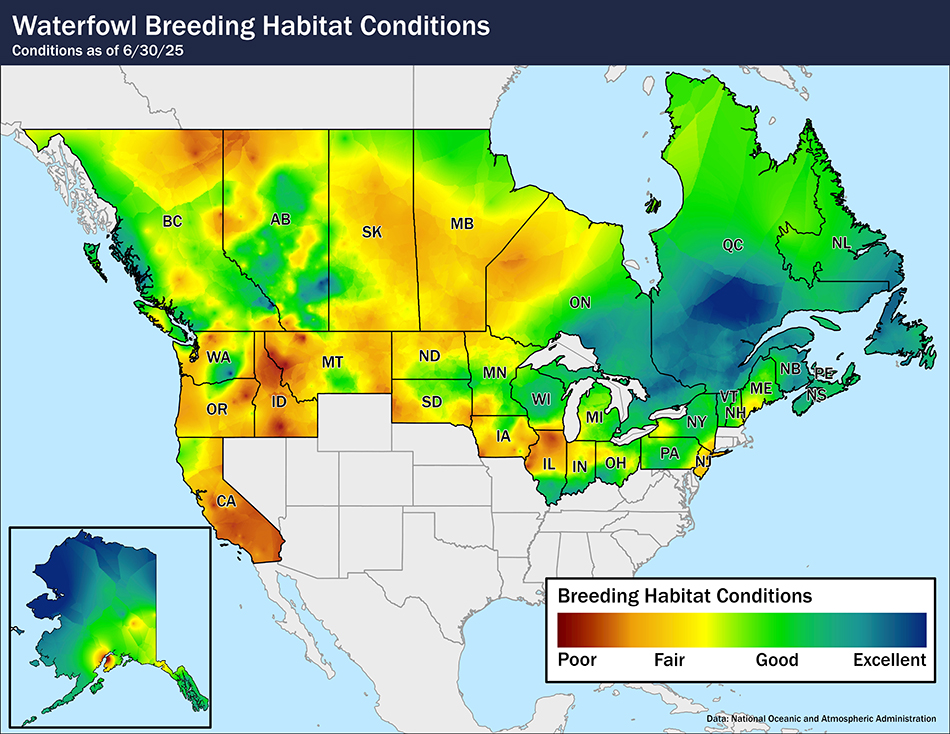
Waterfowl Breeding Habitat Conditions As of June 30, 2025
Delta Waterfowl’s latest data- and field-based assessments reveal a discouraging end to the 2025 duck breeding season across much of the prairie and parkland regions.
Delta’s habitat conditions maps from the three most critical months for duck production tell the story. April began with a moisture deficit, worsened by poor snowmelt that failed to recharge key wetland areas in the Dakotas and southern Manitoba. And although May brought hopeful signs in some areas, June’s widespread heat, wind, and lack of rainfall largely erased that promise.
May’s limited relief was delivered by timely rains that refilled wetlands in parts of the parklands and northern prairies—particularly in Alberta, eastern Saskatchewan, and North Dakota. This likely supported a moderate number of nesting ducks. However, much of the precipitation arrived too late, after many ducks had already “overflown” the prairies in search of better habitat conditions farther north and west.

Further, these gains were largely undone in June. Despite scattered storms that brought hail and high winds across the Dakotas, most carried surprisingly little rain. This led many of the region’s recently filled wetlands to shrink or dry up. Rainfall in Saskatchewan was sporadic, and much of Manitoba remained dry, as evidenced by the province’s ongoing wildfire crisis.
Localized areas of Alberta—where scattered showers maintained decent wetland and upland-nesting conditions—stood out as rare bright spots. However, the precipitation was highly variable, and large swaths of the province are still parched.
Meanwhile, much of the Pacific Flyway saw below-average precipitation in June, further dampening production potential across the western landscape. It’s never a good sign when so much of the West Coast, including much of California, is shaded deep orange or red on the map.
The Atlantic Flyway’s deeper, less seasonal wetlands remain mostly stable. Still, even there—where water levels are generally less sensitive to short-term weather—some areas have started trending toward fair or below-average breeding conditions.
Delta Waterfowl will provide more detailed, flyway-specific analysis in the next issue of Delta Waterfowl and at DeltaWaterfowl.org following the release of the U.S. Fish and Wildlife Service’s 2025 Waterfowl Breeding Population and Habitat Survey. —Mike Buxton
